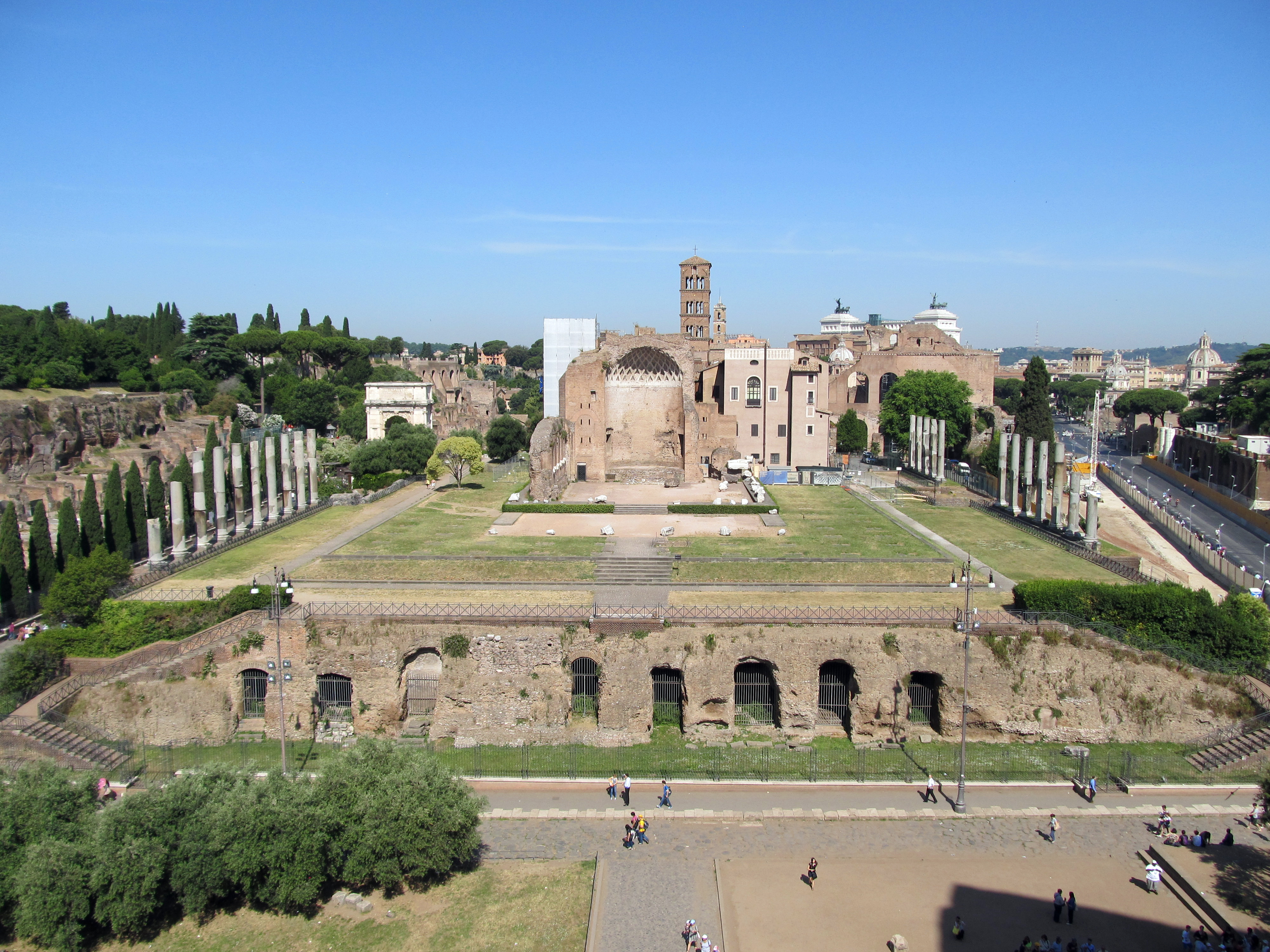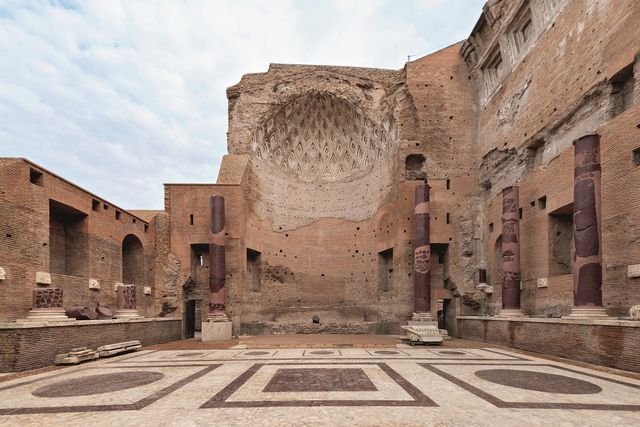Temple of Venus

The Temple of Venus and Rome (templum Veneris et Romae; in late antiquity known as templum urbis) was the largest known temple of ancient Rome.

Located in the eastern part of the Roman Forum, it occupies the entire space between the Basilica of Maxentius and the Colosseum.

It was dedicated to the goddesses Venus Felix (Venus bearer of good luck) and Roma Aeterna.
The temple, inaugurated in 141 AD. by the successor of Hadrian, the emperor Antoninus Pius, it was erected in the place where the vestibule of the Domus Aurea previously stood, of which the orientation was maintained and the foundations were partially reused. The temple, of Hellenizing forms, rose in the center of the large artificial podium: this was flanked on the long sides by a double portico of gray granite columns, on which the two propylaea opened in the center, while on the short sides it was connected with some stairways to the Colosseum square and the Forum. The columns still visible today were raised during the restoration of the thirties.

The actual temple looked like a dipterus: inside two cells oriented in the opposite direction, one for each deity, and preceded by a vestibule. Nothing remains of the peristyle of Corinthian columns, and of the cell facing the Colosseum - the one dedicated to Venus - only the apse remains. The other apse, on the other hand, was incorporated into the former convent of Santa Francesca Romana. What has come up to date, however, largely dates back to the restoration commissioned by Maxentius in 307 AD. following the fire that destroyed the entire central part of the Forum. The apsidal brick cells with coffered vaults, the stuccoes of the coffers (also copied by Palladio), the porphyry columns along the walls and the marble slab floor are due to this restoration.

The abandonment of the building and the subsequent stripping of the structures began in the seventh century, when the emperor Heraclius granted Pope Honorius (625-638) the brass tiles of the roof for use in St. Peter's.

The first systematic excavations of the area were carried out during the French administration of the city, between 1810 and 1817 and the demolition of the medieval structures began.
Visiting hours
From 8.30 until one hour before sunset
Closed January 1st, December 25th
The ticket office closes one hour earlier
Entrance
Visitors will enter from the two entrances to the central archaeological area; via dei Fori Imperiali and via di San Gregorio. Access to the Temple of Venus and Rome, once inside the visiting area, is located next to the Arch of Titus.
Tickets
Full € 12.00; reduced € 7.50
The ticket allows access to the areas of the Roman Forum, the Palatine Hill and the Colosseum
Information and guided tours
tel. 39.06.39967700
Video: Temple of Venus
Map: Temple of Venus
Address: Piazza di Santa Maria Nova, 53, 00186
Roma (RM) Lazio
Latitude: 41.89085702404937
Longitude: 12.48971164226532
Site: http://www.beniculturali.it/mi...
vCard created by: Stefano Vigolo
Currently owned by: Stefano Vigolo
Type: Area
Function: Archaeological site
Creation date:
Last update: 20/06/2022